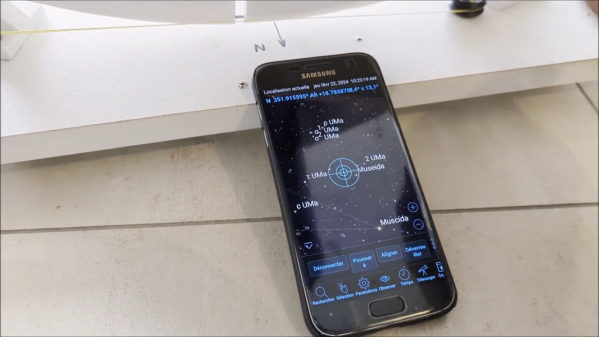Telescopes are fun to point around the sky, but they’re even better when you have some idea of what you’re actually looking at. Experienced sky-gazers love nothing more than whipping out some quality glassware and pointing it to the heavens to try and view some photons from some fancy celestial point of interest. To aid your own endeavors in this realm, you might consider following [aeropic’s] example in building a capable wireless telescope DSC.
Yes, [aeropic] built a capable digital setting circle (DSC) which can be used to quickly point a telescope at objects in the sky, with the aid of the right astronomical software. An ESP32 board runs the show, using AS5600 positional encoders on each axis of the telescope to understand the device’s orientation. The encoders are attached via 3D-printed components to track the motion of the telescope accurately. It can then be paired over Bluetooth with a smartphone running an app like Skysafari. Once calibrated on some known stars, the app can then read the encoder outputs from the telescope, and help guide the user to point the device at other stars in the night sky.
The rig won’t actually move the telescope for you, it just guides you towards what you want to look at. Even still, it makes finding points of interest much faster and could help you get a lot more out of your next sky viewing party. Have fun out there! Video after the break.
Continue reading “Wireless Telescope Guidance You Can Build On The Cheap”


















